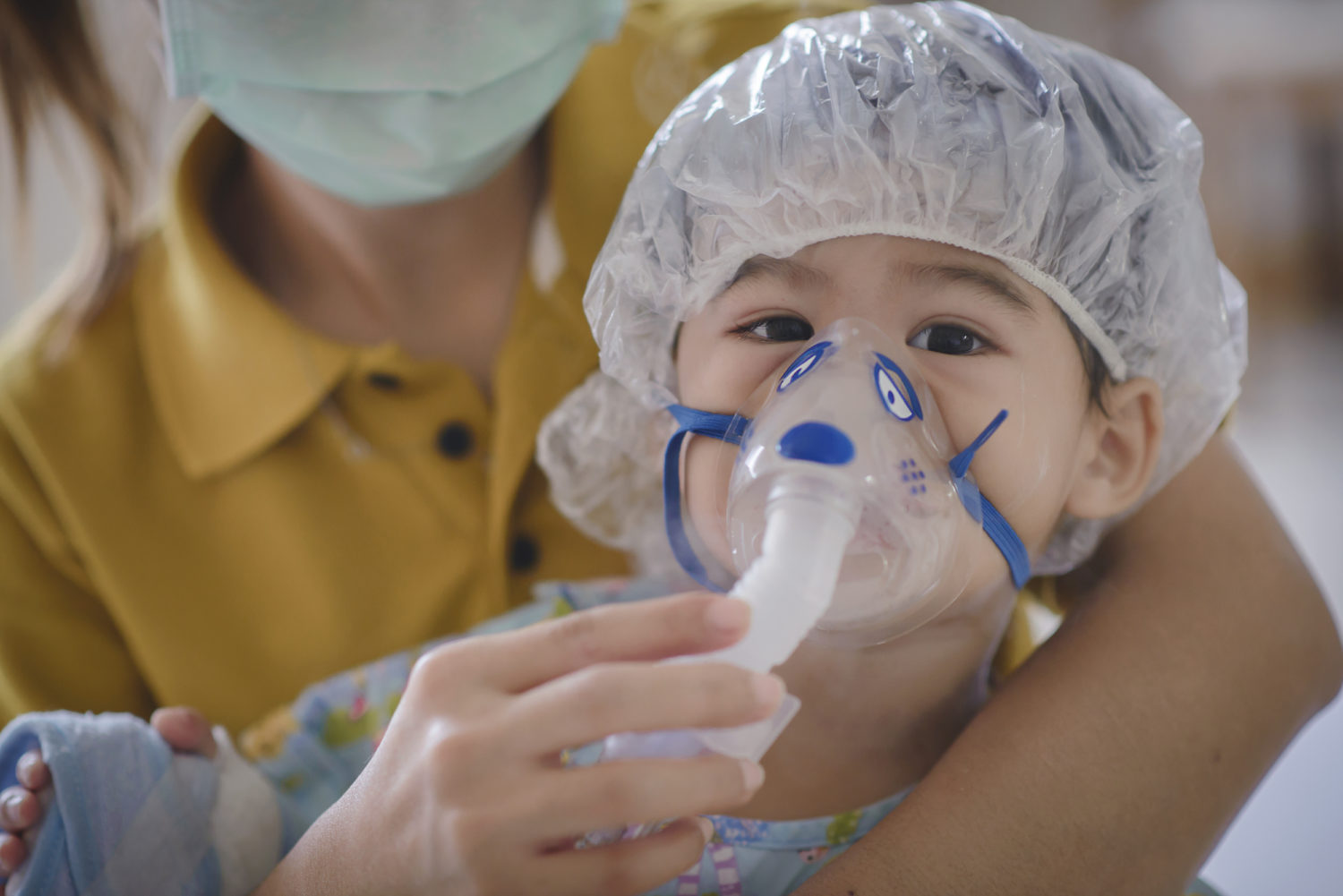
The Morning Meeting with Al Tompkins is a daily Poynter briefing of story ideas worth considering and other timely context for journalists, written by senior faculty Al Tompkins. Sign up here to have it delivered to your inbox every weekday morning.
Respiratory syncytial virus (RSV) infections, coupled with an unusually large seasonal flu outbreak, are filling hospitals with sick children. And Thanksgiving gatherings are sure to spread the infections faster and wider.
As of Friday, in the entire state of Texas, there are 30 available pediatric ICU beds open.
There are zero pediatric ICU beds open in New Hampshire. It is about the same in Minnesota.
A children’s hospital in Toronto is delaying surgeries to keep beds open for emergency cases. The hospital is at 127% capacity right now. In other words, it’s overflowing.
The Atlantic headlined the situation “The worst pediatric-care crisis in decades.”
Maybe we are realizing the true cost of the recent closing of pediatric units around the country.
The American Academy of Pediatrics is asking President Biden to declare a pediatric health emergency. RSV infections are overwhelming hospitals, and the case count is rising. And that is not all that is filling ERs. The AAP says mental health cases are also showing up in alarming numbers.
In a letter to the White House, the physicians wrote:
On behalf of America’s pediatricians and children’s hospitals, we ask you to declare an emergency to support the national response to the alarming surge of pediatric hospitalizations due to pediatric respiratory syncytial virus (RSV) and influenza along with the continuing children’s mental health emergency. The confluence of these capacity issues in pediatric hospitals and communities requires nimbleness and flexibilities that can only be provided through a Presidential declaration of an emergency under the Stafford Act or National Emergencies Act and a Public Health Emergency declaration. These flexibilities have been provided under COVID-19 and were critical during the height of the surge and ongoing fluctuations of the virus. Children and children’s providers require the same capacity support as they strive to keep up with increasing needs of our youngest Americans.
The plea to the White House continued:
Across the country, more than three-quarters of pediatric hospital beds are full, and many states are reporting more than 90 percent of their pediatric beds are occupied. This is mirrored in community settings, where ambulatory pediatric practices are facing tremendous demand and workforce shortages. Capacity constraints at children’s hospitals and pediatric offices are resulting in more children being cared for in community and adult hospitals which may have limited or no capacity to care for children. Telehealth is playing an even more significant role in children’s care given the growing need for telemonitoring, tele-consultations, and support from pediatric specialists to community and adult hospitals; importantly, those telehealth services often cross state lines. We are particularly concerned that historically under-resourced communities will be disproportionately impacted.
The doctors are asking for specific actions. Some of these may seem familiar because the federal government granted such waivers during the COVID crisis. Among them are looser rules on doctors working across state lines and being able to provide telehealth across state lines.
We need emergency funding support and flexibilities along the same lines of what was provided to respond to COVID surges. The emergency declarations requested would allow waiver of certain Medicare, Medicaid or Children’s Health Insurance Program (CHIP) requirements so that hospitals, physicians, and other health care providers may share resources in a coordinated effort to care for their community.
Specifically, blanket and individual Section 1135 waivers are needed to allow temporary reprieve from:
● Conditions of participation that may impede moving patients, use of new spaces for care and adapting to workforce challenges.
● Emergency Medical Treatment and Labor Act requirements that may impede transferring patients and creating off-site triage to manage capacity challenges.
● Licensure reciprocity to support cross state care and telehealth.
● Stark self-referral sanctions. In addition to the federal regulatory relief above, federal encouragement to state Medicaid agencies to support telehealth, out-of-state care and needed flexibilities to manage capacity in hospitals and across the care continuum would be very helpful. (Read the whole letter here)
AAP President Dr. Szilagyi, In a guest commentary for CNN, wrote:
Across the country, some hospitals report they are inching toward 100% of their capacity to care for sick children. Emergency departments are crowded and wait times can be very long. This is not just inconvenient. While most children with respiratory syncytial virus (RSV), influenza, Covid-19 and other viral illnesses do well with rest and care at home, some need critical medical support. And the overwhelmed health system means some families may not be able to get the care their child requires for a medical emergency.
Many emergency department and inpatient beds are occupied by children and adolescents who have mental health needs. This is not because these are necessarily the right places for them to receive mental health care. It is because there is literally no other place to send them.
The pediatricians say the country needs to address the mental health needs of children and adolescents. They say the U.S. needs “investment in pediatric health care capacity. This includes raising Medicaid payment rates to at least what Medicare and private insurance pay for the same services. Since more than half of all US children are enrolled in Medicaid, payment disparities are reducing access to care for children in every community, from the rural doctor’s offices to the big-city children’s hospitals. It is no wonder that we are seeing pediatric units in rural and community hospitals closing. Even before the pandemic, pediatric inpatient beds had decreased by more than 19%, with rural areas seeing even greater losses of pediatric beds, at 26%.”
And the doctors say pediatric hospitals and wards are chronically understaffed.
About the RSV surge, the AAP has new guidance for doctors. Parents should hear this too:
The AAP is recommending pediatricians consider giving high-risk infants and children in some areas more than five consecutive monthly doses of palivizumab to protect them from respiratory syncytial virus (RSV).
The updated interim guidance comes during another unusual RSV season and is accompanied by updated recommendations on handling a surge in patient volume.
The AAP website includes:
To help educate parents about RSV, influenza and other illnesses that could be cared for at home, AAP is sharing videos, and other materials on all social media channels. We welcome your help sharing these materials in your networks:
● A video showing distressed RSV breathing in a baby
● An RSV vs COVID symptoms chart, FAQs about RSV and an article on RSV, flu and COVID, all on HealthyChildren.org
● A newly updated campaign toolkit on influenza, with shareable videos, graphics, articles and messages
Two unions vote today, a national rail strike hangs in the balance
Two more of the nation’s 12 railroad workers’ unions will reveal their votes today on a new national contract. The deal is on the ropes since a couple of the unions have rejected the deal, but the votes today involve the two biggest rail unions which represent nearly half of the 115,000 workers that would be covered by the contract.
A strike in the next couple of weeks could stop a third of America’s freight movement since trucking companies are already operating at near full capacity and barge lines are backed up because of low water levels on the Mississippi River.
By some estimates, a railroad strike would cost the U.S. economy $2 billion a day. The contract negotiations have been going on for three years and unions say they are growing impatient.
What does the COP27 agreement mean to the U.S. and to you
The United Nation’s summit on climate change ended over the weekend with an agreement by nearly 200 countries to pitch in billions of dollars to help countries that have been hurt by climate change and to try to reduce the pollution that contributes to climate change.
Two main themes emerged from the just completed COP27 United Nations climate meeting. One theme is “COP27 summit agrees to help climate victims.” The other is “does nothing to stop fossil fuels.” In other words, delegates left with a big deal but not that big a deal.
And yet, the BBC said, “It can be seen as the most important climate advance since the Paris Agreement at COP 2015.”
Even though the conference attendees ended with a vaguely worded agreement, it is more than they have gotten done in 30 years.
The meeting gathered delegates from nearly 200 countries with the main goal of putting the globe on track to stop or slow the steady rise in global warming. Global average temperatures have risen 1.2 degrees Celsius since the start of the industrial revolution and the original goal was to never go above 1.5 degrees. That goal seems impossible to meet now, and climate experts say we may pay a heavy price.
The World Meteorological Association estimates that unless we slash carbon and methane emissions drastically and fast, the earth’s temperature will climb between 2.1 and 2.9 degrees Celsius by 2100. But let’s look at a much closer timeline. The BBC said:
There’s a fifty-fifty chance over the next five years that we’ll go over this important marker of temperature increases, compared to pre-industrial times. We’re likely to pass it permanently by 2031.
No country is spared the effects of climate change, but the poorest nations already feel the most severe effects and have promoted the idea of a “loss and damage” fund” but countries, including the U.S. do not want to put money into such a fund if it makes us look like we are admitting guilt for the damage. It is a bit like settling a civil lawsuit without admitting you did anything wrong.
So, the U.S. does not like the word “reparations” to be associated with this fund. Our government likes the idea of “helping” countries suffering the effects of historic and deadly flooding, for example.
How will the climate damage payout work?
In short, the answer is “we do not know.” We do not know today what kind of damage would qualify for a payout and we do not know if the fund is nearly enough to do what is intended.
Given our soon-to-be politically divided Congress, who can say if the U.S. can find a way to put money into the program?
And the U.S., while undoubtedly contributes significantly to global greenhouse gasses, does not want to get stuck with the bill for the damages. China, for example, has not signed on to the agreement. And, despite its massive economy, the United Nations lists China as a “developing country” so it could, at least in theory, be eligible to receive the payouts despite being the world’s second biggest economy and the No. 1 emitter of greenhouse gasses.
The agreement does not spell out exactly how much each country would pay, but the New York Times gives us an idea of what the bill might be and how the U.S. might pay its share:
While American diplomats agreed to a fund, money must be appropriated by Congress. Last year, the Biden administration sought $2.5 billion in climate finance but secured just $1 billion, and that was when Democrats controlled both chambers. With Republicans, who largely oppose climate aid, set to take over the House in January, the prospects of Congress approving an entirely new pot of money for loss and damage appear dim.
“Sending U.S. taxpayer dollars to a U.N. sponsored green slush fund is completely misguided,” said Senator John Barrasso, Republican of Wyoming. “The Biden administration should focus on lowering spending at home, not shipping money to the U.N. for new climate deals. Innovation, not reparations, is key to fighting climate change.”
For their part, a variety of European nations have voluntarily pledged more than $300 million to address loss and damage so far, with most of that money going toward a new insurance program to help countries recover from disasters like flooding. Poorer countries have praised those early efforts while noting that they may ultimately face hundreds of billions of dollars per year in unavoidable, irreversible climate damages.
The agreement describes the payouts as mitigation and adaptation. In other words, trying to stop further damage and where damage has occurred, trying to make a bad situation better.
- The mitigation funds would help coal-dependent developing nations move away from fossil fuels, especially coal.
- Adaptation fund would help developing nations prepare for the worst effects of climate change which means not only building stronger flood defenses but improving housing to be resistant to storm damage, developing drought-resistant crops and even moving some populations that are inevitably in harm’s way because of floods and rising tides.
Around 200 countries will contribute to the fund. About 90% of the money would be from governments and the rest would come from private donors. In 2009, there was a similar agreement to pitch in $100 billion a year but some countries didn’t make their goals and now that plan is at least three years behind schedule.
Is the 1.5 Degree Celsius target dead?
Just about everyone, it seems, agrees that there is no way, at this point, that Earth will avoid going over the original target of limiting global warming to 1.5 degrees. That ship sailed — too little action for too long. But the COP27 summit ended with that language still intact. CNN explained the big disappointment that delegates felt:
But while summit delegates affirmed the goal of keeping global warming to 1.5 degrees Celsius, climate experts expressed dismay about a lack of mention of fossil fuels, or the need to phase them down to keep global temperatures from rising. As it did last year at the Glasgow summit, the text calls for a phasedown of unabated coal power, and “phase-out of inefficient fossil fuel subsidies,” but does not go further to call for a phase-out of all fossil fuels, including oil and gas.
“The influence of the fossil fuel industry was found across the board,” Laurence Tubiana, CEO European Climate Foundation, said in a statement. “The Egyptian Presidency has produced a text that clearly protects oil and gas petro-states and the fossil fuel industries. This trend cannot continue in the United Arab Emirates next year.”
It took some dramatic action to even hold onto the 1.5-degree number struck in Glasgow last year.
On Saturday, EU officials threatened to walk out of the meeting if the final agreement failed to endorse the goal to limit warming to 1.5 degrees Celsius above pre-industrial levels. In a carefully choreographed news conference, Timmermans, flanked by a full line-up of ministers and other top officials from EU member states, said that “no deal is better than a bad deal.”
“We do not want 1.5 Celsius to die here and today. That to us is completely unacceptable,” he said.
Use this New York Times interactive to see what each fraction of an increase in the earth’s temperature means to water scarcity, extreme heat, plants and animals, sea level rise and more.
Thankfulness is good for you
During Thanksgiving week, this may have special meaning for you.
A poll conducted on behalf of Motivosity, a company that helps business leaders reward employees, found the more grateful that you are, the happier you tend to be.
“There’s a dramatic correlation between gratitude and happiness,” said Logan Mallory, vice president of marketing at Motivosity. “When people are proactive about being grateful, it rewires their brain to look for positives instead of the negatives around them.
“Previous studies and these survey results tell us that if you want to experience an increase in life satisfaction, just express gratitude more often!”
Respondents say they receive the most gratitude from their spouses or partners (28%), family members (26%), and friends (24%) – with bosses (17%) and co-workers (15%) trailing further down the list.
It fits well with other studies like the one from UC Berkley that found after studying a thousand people from age 8 to age 80:
People who practice gratitude consistently report a host of benefits:
Physical
● Stronger immune systems
● Less bothered by aches and pains
● Lower blood pressure
● Exercise more and take better care of their health
● Sleep longer and feel more refreshed upon wakingPsychological
● Higher levels of positive emotions
● More alert, alive, and awake
● More joy and pleasure
● More optimism and happinessSocial
● More helpful, generous, and compassionate
● More forgiving
● More outgoing
● Feel less lonely and isolated.









